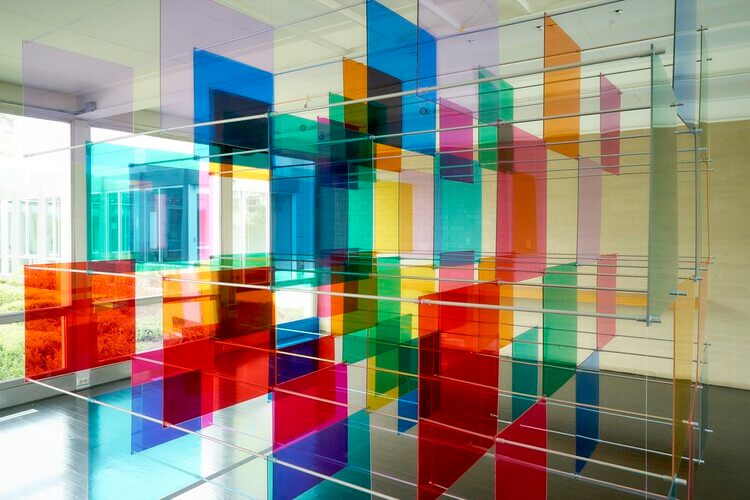The Art of Glass Design
The craft of glass design has been practiced for thousands of years; the ancient Egyptians and Romans used it to produce exquisite decorative items and vessels. Modern glass design has developed into a complex topic that includes both functionality and beauty.
The goal of this article is to examine the history of glass design, its significance in contemporary architecture, its aesthetics, the role of technology in glass design, and its sustainability.
Table of contents
The History of Glass Design
The ancient Egyptians and Romans both left their mark on the history of glass design, which may be traced back to ancient civilizations. The Egyptians created magnificent glass beads, and the Romans utilized glass to build elaborate mosaics, both of which were used to create intricate decorative artifacts and vessels.
The art of stained glass reached its pinnacle during the Middle Ages, which coincided with the construction of stunning cathedrals and churches that featured brilliantly colored and intricately designed stained glass windows.
Glass design has advanced to the point that it is now an essential component of both architecture and design in the current day.
Youtube Video
The Importance of Glass Design in Architecture
Both in terms of its practicality and its aesthetic value, glass design is an essential component of today’s architectural practices.
Natural light can enter buildings through glass facades and windows, making the interior environment more pleasant and productive while also lowering the amount of energy needed to run the building.
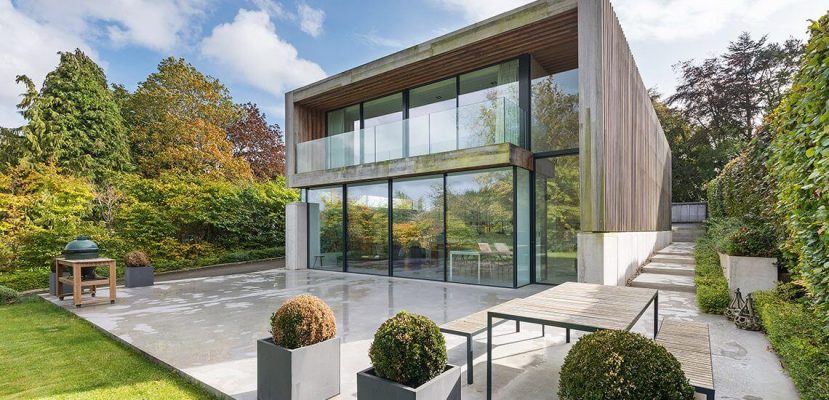
Glass also adds to the aesthetic value of a structure, helping to create an architectural look that is one of a kind and easily recognizable. The significance of glass design in contemporary architectural practices can be seen, for instance, in the modernist glass buildings that were constructed in the 20th century, such as the Farnsworth House and the Glass House.
The Aesthetics of Glass Design
The design of glass is significant not only for the functional features it possesses but also for the aesthetic appeal it possesses. Glass can be used to generate a diverse range of visual effects, including surfaces that are transparent or opaque, as well as designs that are colored or patterned.
Glass art in particular has emerged as a prominent movement within the realm of contemporary art.
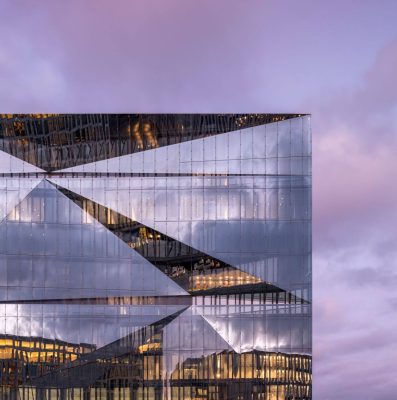
A growing number of artists are investigating the myriad of imaginative opportunities presented by glass as a medium.
For example, Dale Chihuly’s large-scale and bright glass sculptures, which are both beautiful and technically amazing, have transformed the craft of glassblowing. Chihuly’s work has been credited with bringing about this revolution.
The Role of Technology in Glass Design
The evolution of glass design has been significantly influenced by the progress that has been made in technology. Glass products, such as curved and shaped glass, textured and laminated glass, and even laminated glass, may now be designed with a greater degree of freedom and creativity because to advancements in manufacturing techniques and materials.
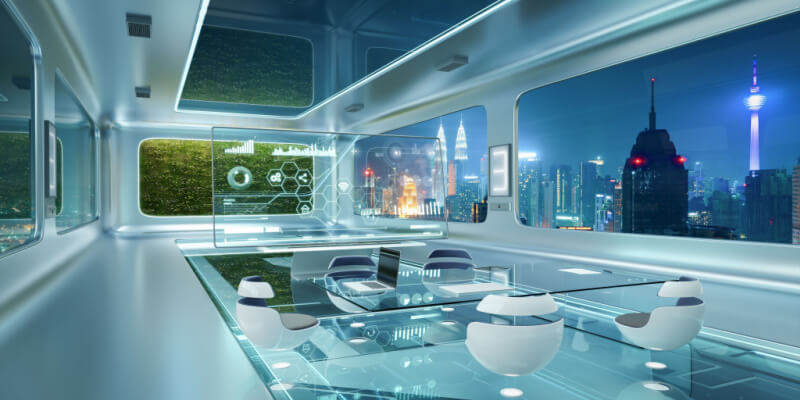
In addition, the advancement of digital technologies has made it feasible for architects and designers to create intricate glass structures and facades, which was not conceivable in the past.
The computer-aided design (CAD) and digital fabrication techniques have transformed the glass sector, allowing for higher precision and efficiency in the manufacture of glass goods. This also has been made possible by the widespread use of these technologies.
Glass Design and Sustainability
The pursuit of sustainability in architecture and design calls for the integration of glass design in a significant way at every stage of the process.
Glass is a material that can be recycled to a high degree, and the utilization of recycled glass in the manufacturing of new products is one way that the environmental impact of the glass industry can be significantly mitigated.

Moreover, glass design has the potential to improve the energy efficiency of buildings, which in turn can help to the sustainability of those buildings.
For example, installing windows with double or even triple panes of glass can lessen the amount of heat that escapes a building and boost its level of insulation, leading to lower overall energy consumption and less emissions of carbon dioxide.
Types of Glass Design
For thousands of years, glass has been used for both practical and decorative purposes. It is an amazing material. From modern glass sculptures to stained glass windows in medieval cathedrals, glass design has developed into a fine art that can improve the aesthetics and usability of any setting.
| Type of Glass Design | Properties | Common Applications |
| Float Glass | Highly transparent, flat and uniform surface | Windows, doors, and partitions |
| Stained Glass | Colorful and translucent | Windows, decorative objects, and contemporary art |
| Tempered Glass | Strong and durable, less likely to break or shatter | Building facades, shower enclosures, and automobile windows |
| Laminated Glass | Safe and sound-insulating, less likely to shatter | Automobile windshields, building facades, and noise insulation |
| Decorative Glass | Patterned, etched, or sandblasted, adds aesthetic appeal | Decorative panels, doors |
Float Glass
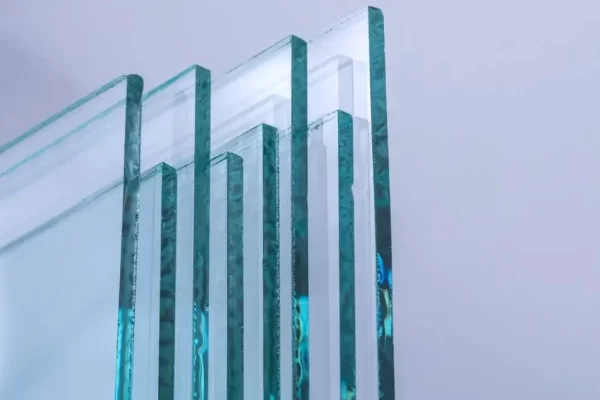
Float glass is one of the varieties of glass design that is utilized rather frequently in contemporary construction. Pouring glass that is molten over a bed of metal that is also molten produces this material, which has a surface that is even and flat.
Float glass is exceptionally see-through and is suitable for a diverse array of uses, such as in the construction of windows, doors, and walls.
Because it is so simple to produce, float glass is an extremely cost-efficient material to use in a wide variety of contexts because this is one of its primary benefits.
In addition, float glass can be laminated or tempered to increase its strength and increase the level of protection it provides.
Stained Glass

Stained glass is a specific kind of glass design that has been utilized for the creation of elaborate designs and patterns in windows as well as other beautiful things for many centuries.
During the manufacturing process, metallic salts are added to molten glass, which results in the creation of a material that is multicolored and translucent and has the appearance of metal.
The aesthetic value of stained glass is widely regarded, as seen by the prevalence of stunning stained glass windows in religious buildings such as cathedrals and churches.
It is also employed in modern art, where a number of artists working with glass are investigating the creative potential of stained glass as a medium.
Tempered Glass
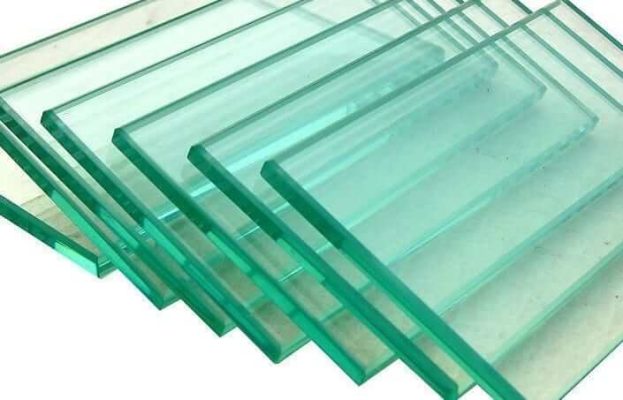
Glass that has been subjected to a process that increases its resistance to breakage and wear and tear is referred to as tempered glass.
It is made by heating the glass at a high temperature and then fast cooling it, which results in a glass that is far more resilient than typical glass.
It is significantly less likely to break or shatter than plain glass, which is one reason why tempered glass is so highly prized for its use in safety applications.
Tempered is frequently utilized in the construction of building facades, shower enclosures, and window panes for automobiles.
Laminated Glass
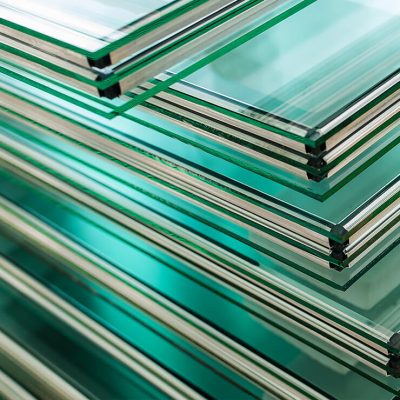
Glass of the sort known as laminated glass has had layers of plastic pressed in between its panes in order to improve the safety of the material as well as its ability to insulate against sound.
It is made by fusing together two or more layers of glass with a layer of plastic sandwiched in between each layer.
It is significantly less prone to shatter than conventional glass, which is one reason why laminated glass is so highly prized for its use in safety applications.
Laminated is frequently utilized in the production of automotive windshields, building facades, and applications requiring noise insulation.
Decorative Glass

Glass that has been patterned, etched, or sandblasted to provide a decorative appearance is referred to as decorative glass. This style of glass design can be also used in a variety of applications.
It is frequently used in applications related to interior design, including as decorative panels, doors, and partitions, among other things.
Acid etching, sandblasting, and laser engraving are just few of the many methods that may be used to make decorative glass.
Other methods include. It is highly prized for its aesthetic appeal due to the fact that it may provide a one-of-a-kind and sophisticated quality to any setting.
The Future of Glass Design
With the continuous development of new materials and methods of production, the glass design of the future promises to be an intriguing possibility.
In order to produce glass goods that are more robust and long-lasting, manufacturers of glass are investigating the possibility of utilizing novel materials such as graphene.
For example, developments in nanotechnology are making it possible to create glass goods that can clean themselves and generate their own energy, which has the potential to completely transform the sector.
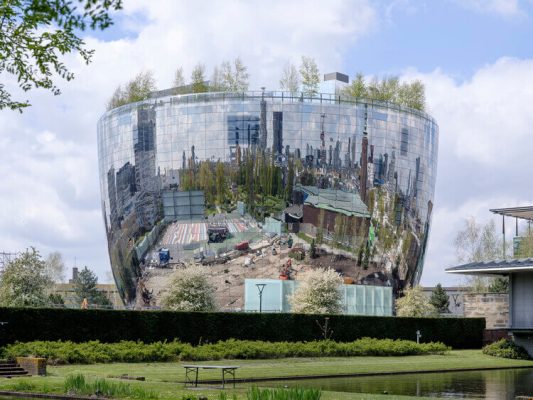
In addition, because environmental preservation is still a primary priority, companies that manufacture glass are coming up with innovative strategies for recycling and reusing the material’s products.
It is anticipated that this pattern will carry on, with the utilization of recycled glass becoming an increasingly common practice in the manufacturing of new glass goods.
Beer Can Glass Designs
Beer can glass designs have gained popularity in the beverage industry as they combine the shape of a beer can, with the sophistication of glassware.
These glasses typically hold 16 ounces like a standard beer can. Their straight sides are perfect for prints and etchings often featuring graphics, brewery logos or quirky messages.
The transparent glass allows the beers color and carbonation to shine through making it visually appealing. This design not attracts beer enthusiasts. Also brings a unique touch to traditional glassware making it a preferred choice, in bars and homes.
What Does a Glass Designer Do?
Glass designers are experts, in crafting both functional designs for a range of glass products. Their role involves envisioning and sketching out designs that can encompass anything from items like vases and sculptures to pieces such as drinkware and windows.
In order to bring their creations to life glass designers must possess an understanding of properties of glass including color, transparency and resistance to temperature. They often collaborate closely with glassblowers or manufacturers to turn their design concepts into reality.
The work of a glass designer necessitates a combination of creativity, technical proficiency and awareness of trends ensuring that each piece they create is not only visually appealing but also practical and safe, for everyday use.
Final Thought
In conclusion, the field of glass design is one that combines beauty and usefulness. Glass design has had a profound impact on human history and culture, from its ancient origins in beautiful artifacts and vessels to its important position in modern building. Glass is a very adaptable material that may be used in a variety of applications due to its aesthetic appeal and functional qualities. The future of glass design appears bright as technology advances, with new materials and manufacturing methods opening up intriguing possibilities for the sector.
You May Also Like
1- 10 Technological Trends of the Future. Click here for read.
2- More guide contents?
3- Click for wikipedia documents.
FAQ
Glass and ceramic design are two distinct design fields that concentrate on producing both useful and aesthetically pleasing things from various materials. Glass design uses glass as the main medium to make structures or items, whereas ceramic design uses clay or other ceramic materials to create objects.
A variety of techniques are used in glass art to shape and manipulate glass into various forms and shapes. Blowing, casting, kiln-forming, and fusing are a few common methods used in glass art.
Decorative glass is a term used frequently to describe glass with design. This can apply to glass that has been etched, sandblasted, or engraved with patterns or designs, as well as stained glass.
Design uses glass because of its transparency, durability, and adaptability. Glass can make windows, doors, dividers, and decorative items. Glass lets natural light in, improving interior air quality and energy efficiency.
Ceramic and glass are useful design materials. Ceramic is stronger than glass, making it a popular choice. Ceramic is easier to mould than glass, making it excellent for complicated shapes. Glass is popular for windows and other transparent applications because of its transparency. Ceramic or glass depends on a project’s design needs.




